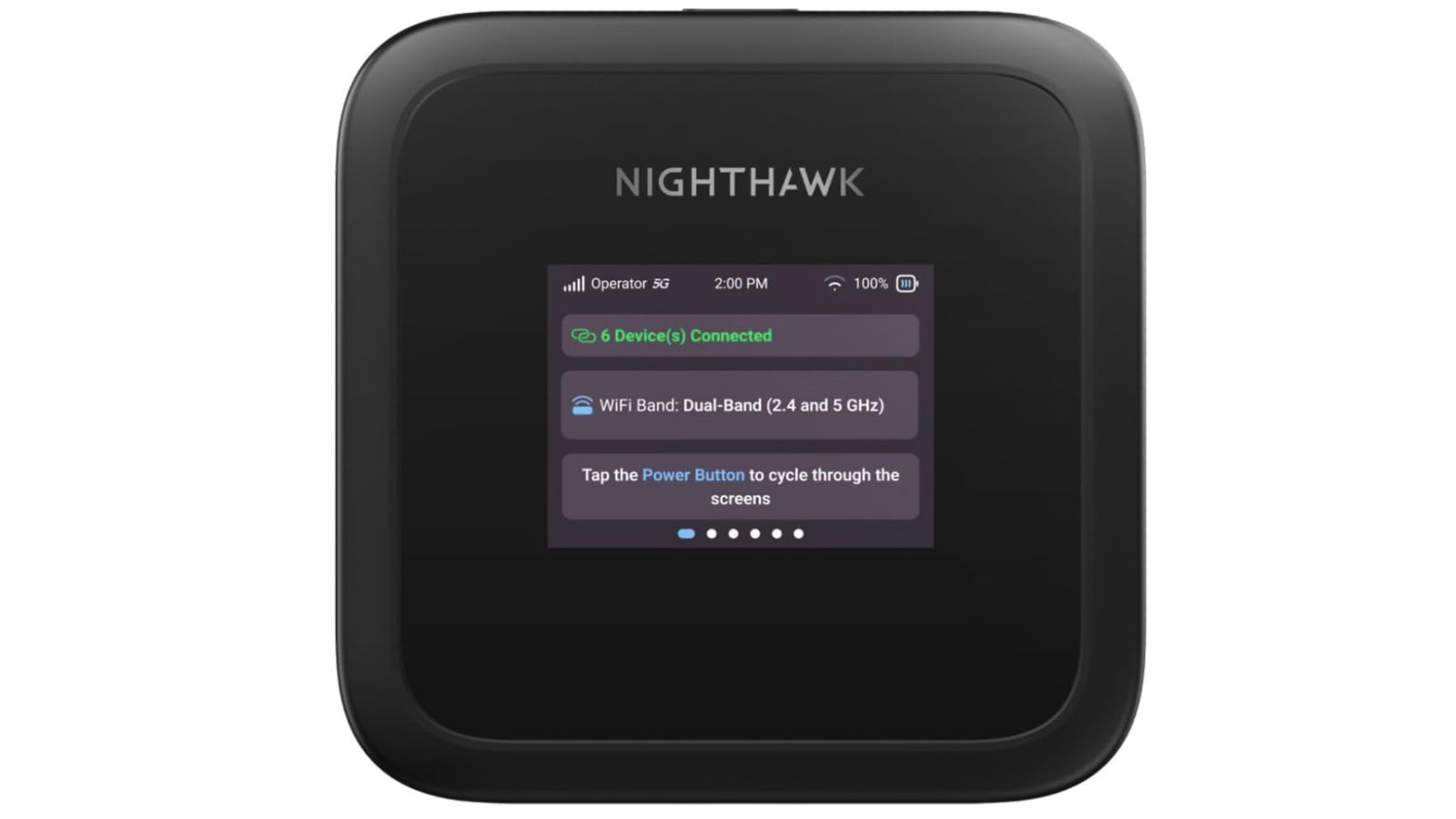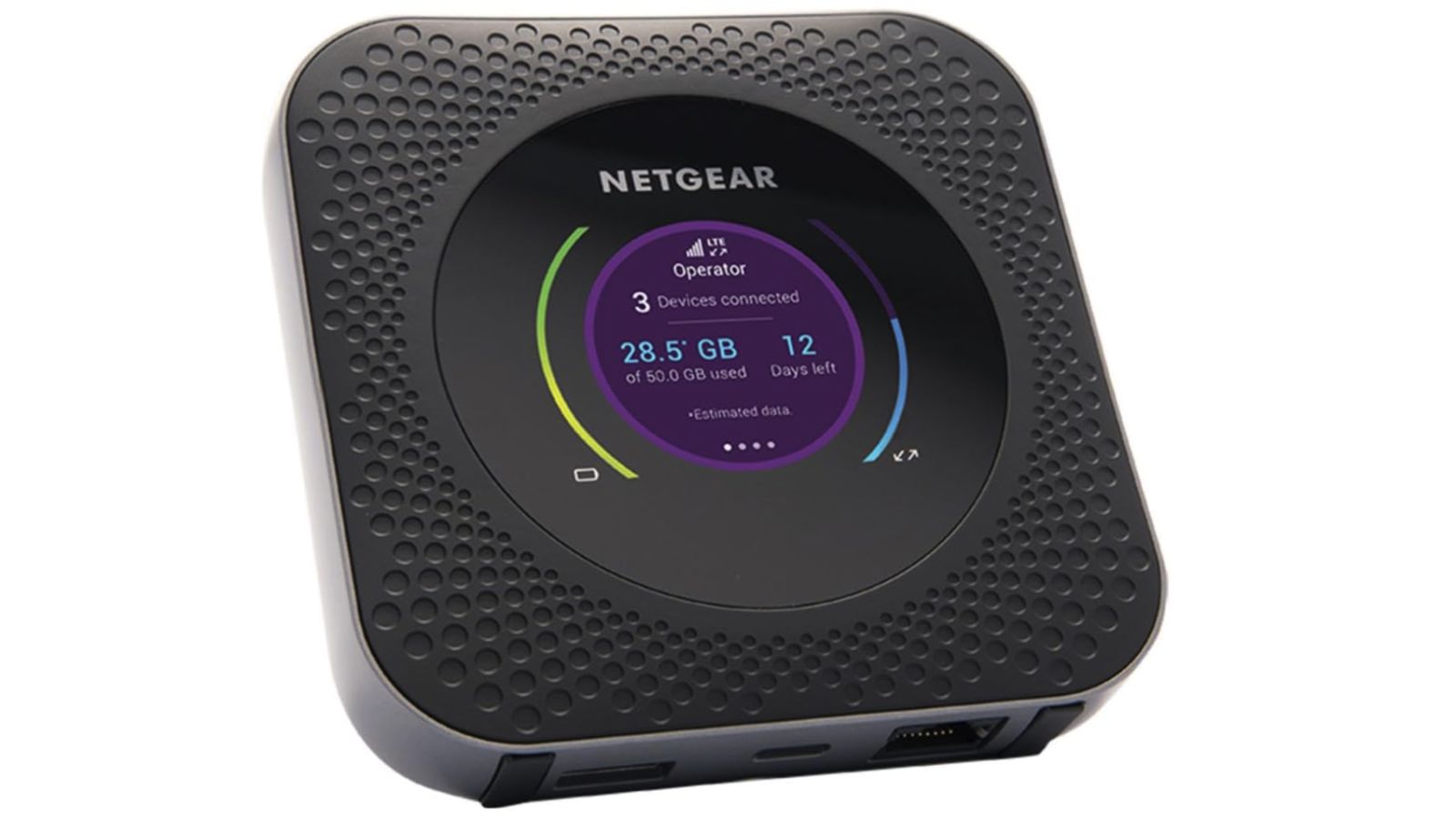If you’re looking for a mobile broadband router then you might be considering one of Netgear’s models, as several are available on O2, or they can be bought outright elsewhere and paired with another network’s SIM card.
But with similar names it can be hard to tell them apart, so below, we’ve compared three of the key Netgear models – namely the Nighthawk M6, the Nighthawk M3, and the Nighthawk M1.
Netgear Nighthawk M6
.jpg)
|
Max 5G speeds: |
2.5Gbps |
|
Battery: |
5,185mAh, 13 hours |
|
Ports: |
1x Ethernet (1Gbps), 1x USB-C (5Gbps), 2x antenna |
|
Screen: |
2.4-inch colour touchscreen |
|
Simultaneous connections: |
32 |
The Netgear Nighthawk M6 is a high-end model, offering 5G speeds of up to 2.5Gbps. It also has an Ethernet port, can get up to 32 devices online, and delivers coverage of up to 1,000 square feet.
It can last a long time between charges too, with a 13-hour battery life from its 5,185mAh battery, and it supports Wi-Fi 6 (with both 2.4GHz and 5GHz bands supported), and has two TS9 antenna ports.
It also has a 2.4-inch colour touchscreen, making it a breeze to monitor and manage connections.
It’s appropriately compact too, with dimensions of 105 x 105 x 21.5mm and a weight of 252g.
Netgear Nighthawk M3

|
Max 5G speeds: |
2.5Gbps |
|
Battery: |
5,185mAh, 13 hours |
|
Ports: |
1x USB-C (5Gbps), 2x antenna |
|
Screen: |
2.4-inch colour screen |
|
Simultaneous connections: |
32 |
As you can see in the table above, the Netgear Nighthawk M3 is a very similar device to the Netgear Nighthawk M6. It also supports 5G with the same 2.5Gbps maximum download speed, and it too supports Wi-Fi 6, both 2.4GHz and 5GHz Wi-Fi, and can get up to 32 devices online.
However, the Netgear Nighthawk M3 doesn’t have an Ethernet port, so it’s less suited to wired connections, and although it too has a 2.4-inch colour screen, it’s not a touchscreen here.
The remaining specs are similar though, including a 5,185mAh battery delivering up to 13 hours of life, a pair of TS9 antenna ports, and coverage of up to 1,000 square feet (though only when plugged in).
It also has the same dimensions and almost the same weight, at 105 x 105 x 21.5mm and 256g.
So if you don’t need a touchscreen or an Ethernet port then this could be a better purchase than the Netgear Nighthawk M6, as it typically costs less and is otherwise very similar.
Netgear Nighthawk M1

|
Max 4G speeds: |
1Gbps |
|
Battery: |
5,040mAh, all-day life |
|
Ports: |
1x Ethernet, 1x USB-C, 1x USB-A, 2x antenna |
|
Screen: |
2.4-inch colour screen |
|
Simultaneous connections: |
20 |
The Netgear Nighthawk M1 is a very different option to the mobile broadband routers above, because while it serves the same purpose it doesn’t support 5G. Instead, it tops out at 4G, with speeds maxing out at 1Gbps.
It also has a 2.4-inch screen that’s a different shape, being a circle rather than a square. There may also be models with a smaller 1.77-inch display, as Netgear’s own documentation sometimes mentions that size, but as far as we can tell you’d likely be getting the 2.4-inch version in the UK.
In any case, another big difference is that it can only get up to 20 devices online at once. It actually has more ports though, with its Ethernet, USB-C, and antenna ports being joined by a USB-A port that’s not found on the models above.
It does have a slightly smaller 5,040mAh battery, but Netgear claims this will still deliver all-day life.
But it supports dual-band 2.4GHz and 5GHz Wi-Fi, and it has almost identical dimensions to the models above, at 105.5 x 105.5 x 20.35mm, though it weighs slightly less at 240g.
So while there are a lot of differences between the Netgear Nighthawk M1 and the options above, the main factors for most people will be that’s it’s far slower, and supports fewer simultaneous connections. But as a result it’s also typically cheaper.












